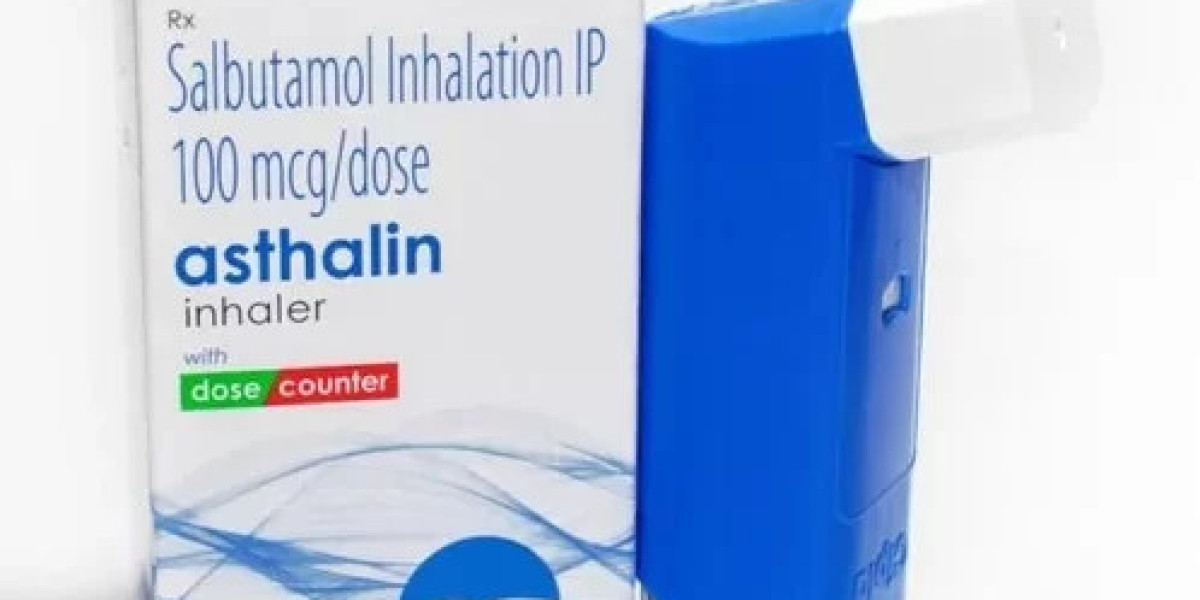Asthma is a chronic respiratory condition characterized by inflammation and narrowing of the airways, leading to symptoms such as wheezing, shortness of breath, chest tightness, and coughing. While asthma cannot be cured, it can be effectively managed with the right treatment approach. One such cornerstone of asthma management is the use of Asthalin Inhaler.
Understanding Asthma
Before delving into the role of Asthalin Inhaler in asthma management, it's essential to have a basic understanding of asthma itself. Asthma is a chronic inflammatory condition of the airways, characterized by episodes of airflow obstruction. This obstruction is typically reversible, either spontaneously or with treatment. Common triggers for asthma symptoms include allergens (such as pollen, dust mites, and pet dander), respiratory infections, exercise, cold air, and certain medications or food additives.
The Role of Asthalin Inhaler
Asthma management aims to achieve and maintain control of symptoms, minimize the risk of exacerbations, and maintain normal lung function. Asthalin Inhaler, also known as a rescue or reliever inhaler, is a key component of this management approach. It contains the active ingredient salbutamol, a short-acting beta-agonist bronchodilator.
Mechanism of Action
When inhaled, salbutamol binds to beta-2 adrenergic receptors located on the smooth muscle cells lining the airways. This binding activates the receptors, leading to relaxation of the muscles and subsequent bronchodilation. As a result, the airways open up, allowing for improved airflow and alleviation of asthma symptoms such as wheezing and shortness of breath.
Managing Asthma Symptoms
Asthma symptoms can vary in severity and frequency from person to person. Some individuals may experience mild symptoms that only require occasional treatment with Asthalin Inhaler, while others may have more severe or persistent symptoms that necessitate daily medication and close monitoring.
Using Asthalin Inhaler Effectively
Proper technique is essential for maximizing the benefits of Asthalin Inhaler. Here are some key steps to ensure effective use:
- Shake the inhaler well before each use to ensure proper mixing of the medication.
- Remove the cap and exhale fully to empty the lungs.
- Hold the inhaler upright, with the mouthpiece facing towards you.
- Place the mouthpiece between your lips and form a tight seal around it.
- While breathing in slowly and deeply, press down on the canister to release a puff of medication.
- Continue to inhale slowly to ensure the medication reaches deep into the lungs.
- Hold your breath for a few seconds before exhaling slowly.
- If another dose is needed, wait at least 60 seconds before repeating the process.
- After use, replace the cap to protect the inhaler from dust and debris.
Conclusion
Asthalin Inhaler plays a crucial role in managing asthma by providing quick relief from symptoms and improving airflow in the lungs. By understanding its mechanism of action and using it effectively, individuals with asthma can achieve better control of their condition and enjoy a better quality of life. However, it's essential to remember that Asthalin Inhaler is a rescue medication and should not be used as a substitute for long-term controller medications prescribed by a healthcare professional. Always consult with your doctor for personalized advice and guidance on asthma management.



